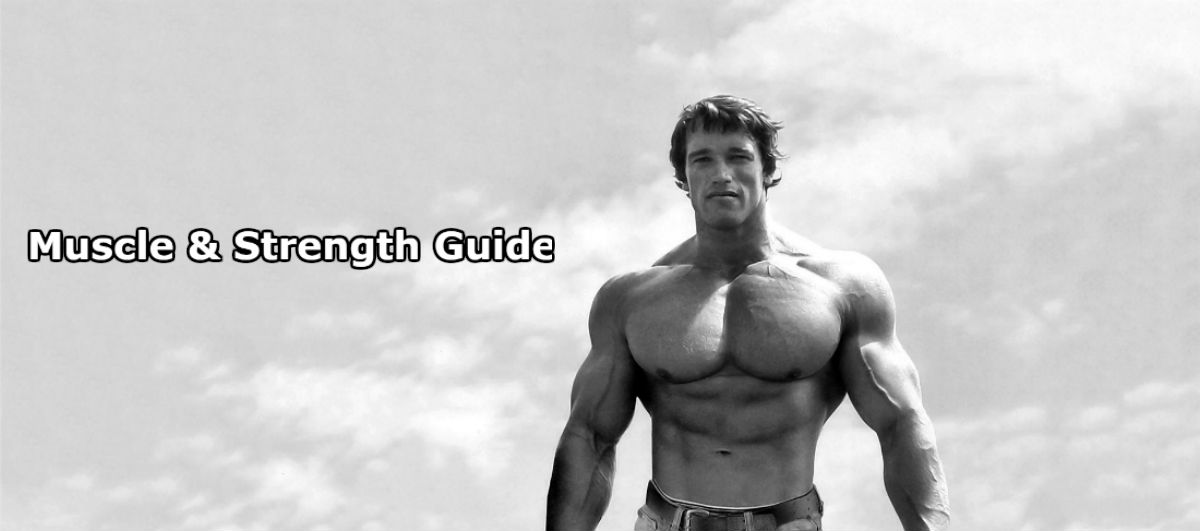
Deadlifts are called the king of all lifts for a reason–they work. Not only do they stimulate literally every muscle from your calves to your traps, the help to bring about strong hormonal responses that further keep the gains coming.
Why Should You Even Deadlift?
Your endocrine system is tasked with producing enough testosterone, growth hormone, and other beneficial anabolic substances within your body.
The amount of hormones produced depends on the level of stress placed on your central nervous system. If you choose powerful lifts such as the deadlift, you will place a large amount of stress on your body, thereby causing your endocrine system to release all of those juicy natural muscle-building hormones.
On top of helping to supercharge your body’s muscle-building “state,” deadlifts also promote strong posture and athleticism. A properly-perform deadlift is done with one’s chest up and expanded, shoulders back and “tucked down,” and glutes pushed forward. When you imagine a superhero, you image a person that deadlifts.
Last but not least, they place an enormous load on the large muscle groups that make up one’s back, posterior chain, and legs. When you consider the element of diminishing returns and bodily recovery, deadlifts are undoubtedly the “best deal” when it comes to exercises.
If you increase your deadlift number, there’s zero question–you’ve built muscle and better neuro-muscular conditioning.
Deadlift Exercise Guide
Now that you understand why deadlifts are so effective, let’s dig a little deeper on the best strengthening methods and how to segment your training for optimal results.
Deadlift Strengthening Method For Beginners
If you are just getting started in the world of strength training, you should focus on developing strength in the conventional deadlift. Until you have mastered that with perfect form and can perform 315 for multiple repetitions, there’s no need to add in specialized “segment exercises”. Instead, focus on variation in the repetition scheme. Here’s what that looks like:
- Monday: 5×10
- Wednesday: 3×5
- Friday: 5×3
By using this form of programming, you will build your work capacity, while also providing enough load for your body to grow. It is a variation off of the famed 5/3/1, but provides more volume through higher reps–more gains and less chance of injury if you’re a novice and don’t need super heavy weights to grow.
Make sure to track what you’re doing. One of the really stupid, simple mistakes a lot of gym-goers make when attempting to get better at the lift, is failing to progressively increase the weight. Take a notepad with you and write down every single set.
Refer to it religiously as you enter the gym for each deadlift session–use it as motivation and push yourself to beat that in some form or fashion, whether that be more sets, more repetitions, or more weight.
Utilizing that strategy will net huge gains for someone just getting started. If you’re in the intermediate or advanced category of strength trainees, however, it’s going to take something else.
Segment Method For Intermediate And Advanced Lifters
The answer? variation. That simple factor allowed me to dial in on the specific areas that were giving me trouble.
By building up different “segments” of the lift, I was able to build speed throughout the entire lift. That, compounded with better form from performing the lift with a higher frequency, added serious poundage to my deadlift in a short amount of time.
It took me some time to dial these in perfectly, but once I figured it out, the gains rolled in like butter. By devoting more time to each individual, specific part of the exercise, you will be able to decrease your overall workload (great for recovery once you start moving serious weight), while increasing the weight!
While some may think that you only need to do these if you’re “lacking” in a certain area, I disagree. By focusing on these areas preemptively, you’ll never run into a sticking point or plateau in the first place.
Here’s the lift of “segment-building” exercises I depended on.
Rack Pulls
While it’s obvious that this movement helps to develop your strength in the “lockout,” what this movement is truly best at is super-loading your spinal erectors (the muscles responsible for keeping your spine upright while starting the initial pull in the deadlift). In short, this simply allows your body to get used to more weight than it can actually handle. You will always be able to rack pull more than you deadlift, meaning you will always be able to prepare your spinal erectors for more weight than they’ll encounter when you go to max out on the main lift. This unforeseen, yet simple aspect adds pounds like nothing.
Deficit Deadlifts
This exercise is a champ at building your speed off the ground. It’s lazer-focus on developing strong hamstrings and glutes translates directly over to the normal version of the lift. A lifter hardly ever fails a deadlift because of their quad strength. If you fail at the deadlift, it’s because you were unable to close the distance between your hips and the bar, which is only done by hip extension (glutes, hamstrings, and more glutes).
When performing deficit deadlifts, we instruct our clients and athletes to use a very steep deficit of 3 or more inches.
Why? Building confidence in an additional 3 inches or more of ROM (range of motion) translates big time when you go to pull ‘normal.’ Set the platform high, and push yourself to hit numbers close to what you could do pulling straight from the ground. Just a few weeks of pursuing strength here will pay off big in your explosiveness and ability to stay tight from the floor.
Sumo Deadlifts
If you only do conventional deadlifts, you must add in the sumo variation. Conversely, if your a gym-bro stuck on the latest fad of “cheater” sumo pulling (just kidding–sumo deadlifts are awesome too), you need to be doing to convention method as well. They work synergistically to effect different areas of the lift. If you only do one or the other, prepare to quickly plateau once you get into the serious weights.
Personally Tested: It Works
I personally put these methods into practice and increased by deadlift from 530 all the way to 580 in one eight-week training mesocycle. When I finally tested I hit 500×5 for touch and go (using the Epley Formula that’s a max of around 583). Also keep in mind that was at the end of my exhaustive training program, while the 530 max was in-competition.
The results were so extreme because I personally had a huge weakness in my hamstrings as well as my upper back positioning after breaking the ground. By doing a bunch of deficit work and rack pulls I was able to blast these weaknesses. And if you’re wondering if you should do a touch and go deadlift vs dead stop, I’d suggest using touch and go for most of your sets, while working on dead stop deadlifts on the lower rep day, or Friday in the program above. But if you’re not worried about strength, just stick to touch and go deadlifts.
It works wonders if you put in the effort to find your own weakness–and then hammer away at that segment.
Regardless of your training program, your results will depend on your consistency and dedication. You are now armed with all of the knowledge necessary to add serious pounds to your deadlift.

